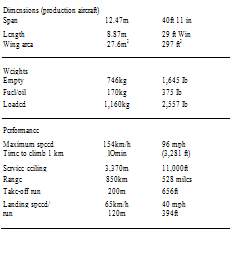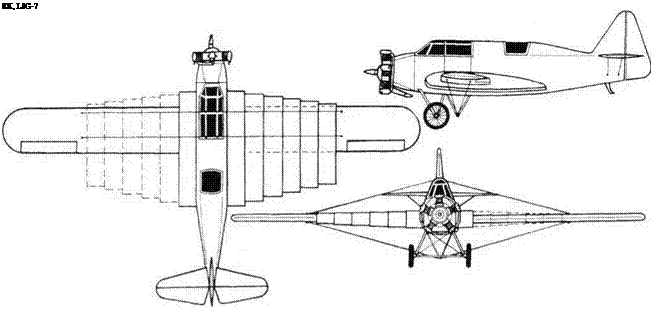NIAI LK-1
Purpose: T o build a more efficient light transport.
Design Bureau: NIAI, initials from Scientific Research Aero Institute, Leningrad, formed by the LIIPS, the Leningrad Institute for Aerial Communication; designers AI Lisichkin and V F Rentel.
Even though it went into production and everyday use, this aircraft qualifies by virtue of
its extraordinary layout, with the wing blended into the fuselage. The prototype, with civil registration LI 300, was first flown by A Ya Ivanov in May 1933. Despite the fact that the pilot had no view except over a sector of about 100° to the left side, Ivanov’s opinion was favourable because the aircraft handled well. After four months of testing in Leningrad the LK-1 was flown to Moscow. There it was tested by the Nil, as a result of which a small
series of 20 were built. These saw Aeroflot service in the Arctic, on occasion being fitted with skis or floats.
LK stood for Leningradskii Kombinat, and the prototype was also unofficially called Fan – era-2 (Plywood 2). Though basically a simple all-wood machine, powered by a l00hp M-l 1 engine, it strove to gain in lift/drag ratio by blending the wing root into the fuselage. Indeed, it could be considered as an all-wing
LK-1 senesaircraft
aircraft with the nose engine and rear fuselage attached to the thickened centre wing. This central portion contained two pairs of seats, that on the left in front being for the pilot. The entire front and top of this cabin was skinned in transparent panels, those along the sides sloping at 60°, two of them forming doors. The prototype had a ring – cowled engine, spatted main wheels and a broad but squat fin and rudder. Production aircraft had no cowling or spats, but had a redesigned wing root and a narrower rear fuselage and completely redesigned vertical tail.

 Several designers attempted a cabin of this kind, but all the others were very large air-
Several designers attempted a cabin of this kind, but all the others were very large air-
 |










